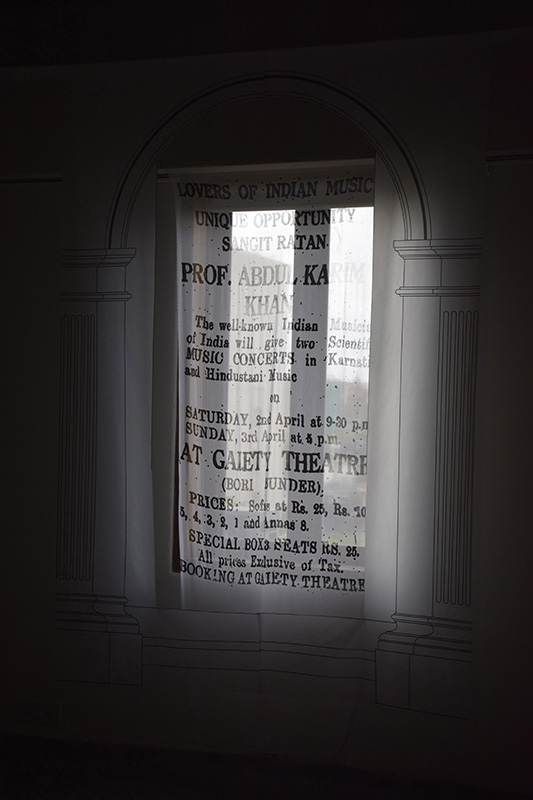Tejaswini Niranjana




Grant Period: Over nine months
Tejaswini Niranjana is a well-known scholar of inter-disciplinary cultural studies, and has been writing on music for the last decade. During her recent research into the history of Hindustani music in Mumbai, Tejaswini began having interesting conversations with filmmaker Surabhi Sharma and architect Kaiwan Mehta who lent diverse perspectives to her work springing from their respective practices. This grant enables Tejaswini to consolidate her two-year research into an inter-disciplinary work with collaborators, Kaiwan and Surabhi. Together, they will create an exhibition that will trace the history of Hindustani music in Mumbai from the late 19th to early 20th century.
Through the nineteenth century, Mumbai grew into a major centre for trade and commerce and a market for entertainment with the rise of new patrons in the city. Following the fall of Awadh in 1857, scores of musicians and dancers left their ‘native’ states and came into the emerging city of Mumbai in search of new patrons and new markets. Their search was aided by the coming of the railways in the 1860s. Almost all of India’s most famous gharanas including the Jaipur-Atrauli, Gwalior and Kirana flourished side by side in Mumbai’s chawls, with the practitioners listening to each other, performing, teaching and recording. Gradually, the different dialects of Hindustani in which they sang their bandishes, made way for a certain common Hindi that soon became the language widely used in singing.
Not only did a new language of music evolve, but music itself became a new language that created a new ‘public’. New modes of public listening experiences were made possible in several public places with the emergence of Parsi theatre, Marathi sangeet nataks, music circles, music schools, baithaks in wealthy patrons’ houses, music conferences and concert stages in places such as Laxmi Baug, Ranibaug, Malabar Hills and so on. A distinct ‘musicophilia’ – a practice of musical enjoyment and public discussions around it – became an important feature of the metropolis, Tejaswini says in her proposal. Such a practice created new audiences and students, giving rise to a proliferation of private tutorship and opening of new schools.
While studying this process as part of her personal research project earlier, Tejaswini’s chance conversations with Surabhi and Kaiwan began to open out new perspectives for each of them. Surabhi, for instance, had already made a film Bidesia in Bambai, on the music of the migrant Bhojpuri community that came to Bombay to look for economic opportunities. In this film she had attempted to film music and tell stories with music. In the project proposed by Tejaswini, the challenge for her was to map history onto the physical spaces in Mumbai and recreate through film, what she calls the ‘sonic space’. As an architect, Kaiwan’s interest in the creation of ‘public’ spaces encouraged him to study how, with the emergence of music spaces, the ‘interior’ or ‘private’ started becoming ‘public’. Tejaswini herself had never seen her research through the lens and aesthetics of architecture or film. Hence each of them found their own practices feeding into each other in a confluence and extending into newer areas. The three of them have started engaging in ‘attentive walks’ through neighbourhoods, and are conducting several interviews with musicians, theatre people, collectors, organisers and listeners, while also collecting maps, photographs and recordings.
As part of this project, more audio and video material will be generated and a 9-day architecture workshop will be conducted for students of architecture. The workshop will look at understanding urban spaces in relation to cultural practices through a focus on architecture. Following the workshop, students will engage in documentation and mapping of specific areas. This musical cartography will culminate in an exhibition that will tell the story of Hindustani music in the city through video and audio installations, maps, photographs and performances. The exhibition, curated by Tejaswini, will be held in June 2015 at Studio X. Strategically located within close proximity of Mumbai’s historical musical spaces, Studio X offers the collaborators more opportunities to explore their collaborations. The trio are also looking at organising a few performances with young musicians during the exhibition. The other collaborators on this project are musician Rutuja Lad, exhibition designer Farzan Dalal and architect Sonal Sundararajan.
